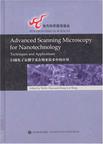扫描电子显微学及在纳米技术中的应用
2007-1
高等教育
周维列
在过去的10年中,纳米技术的飞速发展使得扫描电子显微镜成为了一种分析和构建新纳米材料、结构和器件不可缺少的有力的工具。新纳米材料的发现需要通过先进的分析技术和技能来获取高质量的图片,从而帮助我们理解纳米结构,以达到改进合成方法和提高性能的目的。例如场发射枪、背散射电子的探测、X射线元素的图像化等,已经很大程度地提高了扫描电子显微镜在纳米材料分析中的应用。除了分析功能之外,扫描电子显微镜可以与最新发展起来的测控技术相结合,实行原位纳米器件的加工、制造和性能表征。这些技术包括纳米材料的操控、电子刻蚀、聚焦离子束微加工等。虽然这些技术仍在发展之中,但它们已开始广泛应用于纳米研究的各个领域。
Chapter 1 Fundamentals of Scanning Electron Microscopy 1.1 Introduction 1.2 Configuration of scanning electron microscopes 1.3 Specimen preparation 1.4 Conclusion References Chapter 2 Electron Backscatter Diffraction(EBSD)Technique and Materials Characterization Examples 2.1 Introduction 2.2 Data measurement 2.3 Data analysis 2.4 Applications 2.5 Current limitations and fur 2.6 Conclusion References Chapter 3 X-ray Microanalysis in Nanomaterials 3.1 Introduction 3.2 Monte Carlo modeling of nanomaterials 3.3 Case studies 3.4 Conclusion References Chapter 4 Low kV Scanning Electron Microscopy 4.1 IntrOductlon 4.2 Electron generation and accelerating voltage 4.3 Why use low kV? 4.4 Using low kV 4.5 Conclusion References Chapter 5 E-beam Nanolithography Integrated with Scanning Electron Microscope 5.1 Introduction 5.2 Materials and processing preparation 5.3 Pattern generation 5.4 Pattern processing 5.5 Applications 5.6 Conclusion References Chapter 6 Scanning Transmission Electron Microscopy for Nanostructure Characterization 6.1 Introduction 6.2 Imaging in the STEM 6.3 Spectroscopic imaging 6.4 Three-dimensional imaging 6.5 Recent applications to nanostructure characterization 6.6 Future directions ReferencesChapter 7 Introduction to ln-situ Nanomanipulation for Nanomaterials Engineering 7.1 Introduction 7.2 SEM Contamination 7.3 Types of nanomanipulators 7.4 End effectors 7.5 Applications of nanomanipulators 7.6 Conclusion ReferencesChapter 8 Applications of FIB and DualBeam for Nanofabrication 8.1 Introductlon 8.2 Onboard digital patterning with the ion beam 8.3 FIB milling or CVD deposition with bitmap files 8.4 Onboard digital patterning with the electron beam 8.5 Automation for nanometer control 8.6 Direct fabrication of nanoscale structures 8.7 Conclusion References Chapter 9 Nanowires and Carbon Nanotubes 9.1 Introduction 9.2 Ⅲ-V compound semiconductors nanowires 9.3 Ⅱ-VI compound semiconductors nanowires 9.4 Elemental nanowires 9.5 Carbon nanotubes 9.6 Conclusion References Chapter 10 Photonic Crystals and Devices 10.1 Introduction 10.2 SEM imaging of photonic crystals 10.3 Fabrication of photonic crystals in SEM 10.4 Conclusion References Chapter 11 Nanoparticles and Colloidal Self-assembly 11.1 Introduction 11.2 Metallic nanoparticles 11.3 Mesoporous and nanoporous metal nanostructures 11.4 Nanocrvstalline oxides 11.5 Nanostructured semiconductor and thermoelectric materials 11.6 Conclusion References Chapter 12 Nano-building Blocks Fabricated through Templates 12.1 Introduction 12.2 Materials and methods 12.3 Nano-building blocks 12.4 Conclusion References Chapter 13 One-dimensional Wurtzite Semiconducting Nanostructures 13.1 Introduction 13.2 Synthesis and fabrication of one—dimensional nanostructures 13.3 One-dimensional metal oxide nanostructures 13.4 Growth mechanisms 13.5 Conclusion References Chapter 14 Bio-inspired Nanomaterials 14.1 Introduction 14.2 Nanofibers 14.3 Nanoparticles 14.4 Surface modification 14.5 Conclusion References Chapter 15 Cryo-Temperature Stages in Nanostructural Research 15.1 Introduction 15.2 Terminology used in cryo-HRSEM of aqueous systems 15.3 Liquid water,ice,and vitrified water 15.4 History of 10W temperature SEM 15.5 Instrumentation and methods References

书很好,不过拿回来的时候封面有点脏,但是不影响阅读。
——这本书挺好看的,挺满意